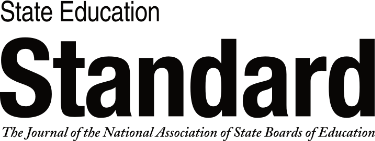When COVID-19 first disrupted the routines and traditions that constitute school, many teachers grappled for the first time with online instruction, often with little experience or support. The experience of the past months has demonstrated that those who could transition seamlessly to online or hybrid models were already delivering authentic, project-based learning tied to students’ interests or experiences, real problems, and events—and leveraging technology to do it. They provide examples of the way forward post-COVID.
Seize the Moment: Double Down on Authentic Learning
Also In this Issue
Reshaping Assessment and Accountability in 2021 and Beyond
By Bonnie O'Keefe, Andrew Rotherham and Jennifer O'Neal SchiessData about system performance will continue to lie at the heart of school improvement.
The Role of Technology in Reimagining School
By Kristen Amundson and Andrew KoPandemic or no, states ought to press for better technology for personalized learning and making staff and students safer.
The Greenfield Path to School Improvement
By Frederick HessState Policymakers can help clear away the rubble that impedes vibrant reform.
Transforming Learning through Competency-Based Education
By Susan PatrickStates are adopting a range of policies to personalize student learning and move away from seat-time rules.
Seize the Moment: Double Down on Authentic Learning
By Monica Martinez and Dennis McGrathProject-based learning tied to students' communities and interests readily makes the leap across modes of instruction.
Moving toward Competency-Based Professional Learning
By Melissa Tooley and Joseph HoodMicrocredentials embedded in effective learning systems can promote teacher growth, advancement, and retention.
Kansas Schools Build Resilience amid Redesign
By Valerie NorvilleSchools opt to change their approaches to learning and see gains in adaptability.










 i
i
 i
i